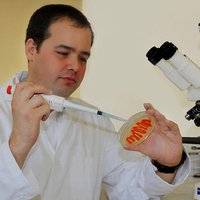Biotechnology & medicine
Kathryn Whitehead
A systematic search discovered nanoparticles that could improve drug delivery.
Photo courtesy of Kevin Love

Global
Maryam Shanechi
Using control theory to build better interfaces to the brain.

Global
Emily Balskus
More precise knowledge of the bacteria in our guts could lead to better-targeted treatments for chronic conditions.

Latin America
Jose Ruben Morones Ramirez
His combination of antibiotics and silver salts multiplies the effect against infectious diseases

Global
Megan McCain
Heart on a chip paves the way for personalized cardiac medicines.
